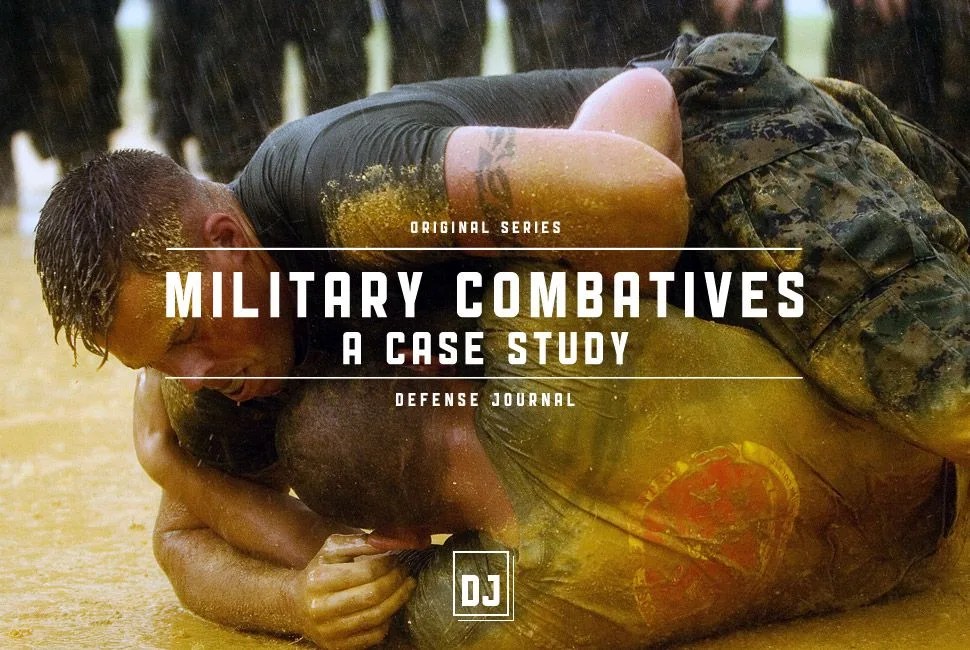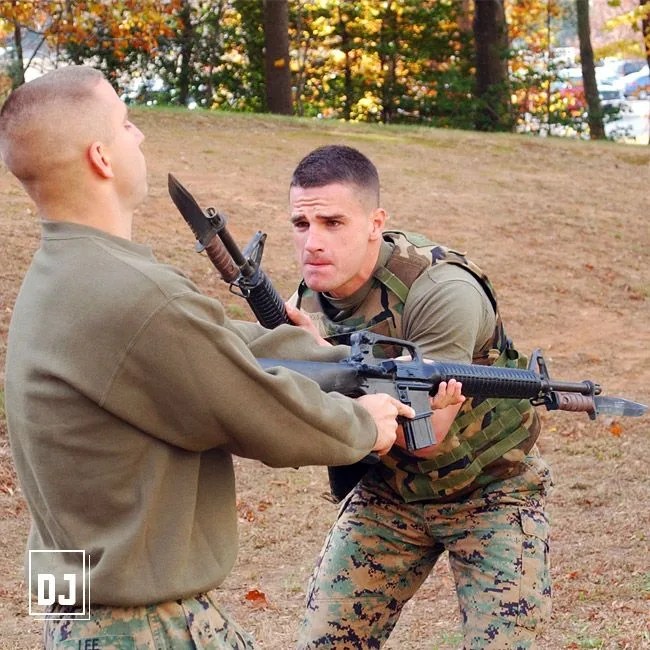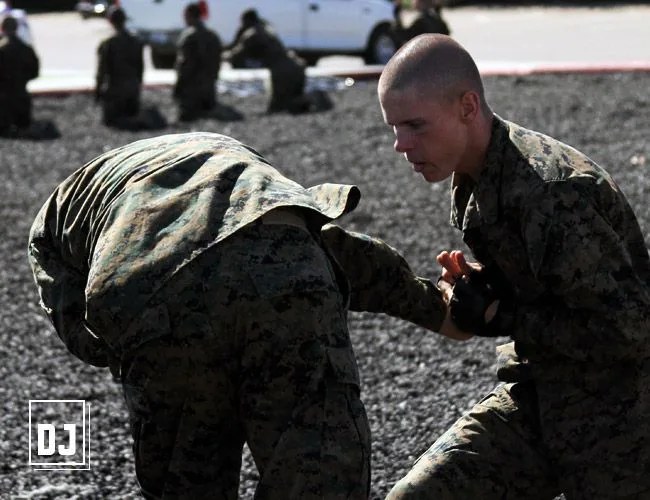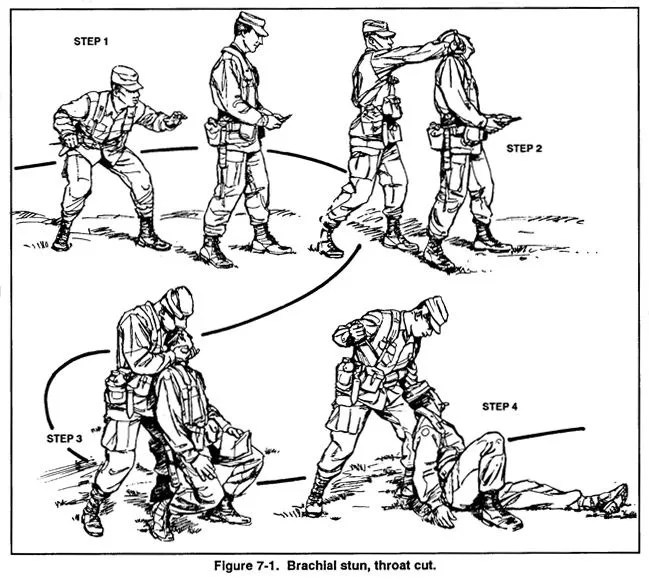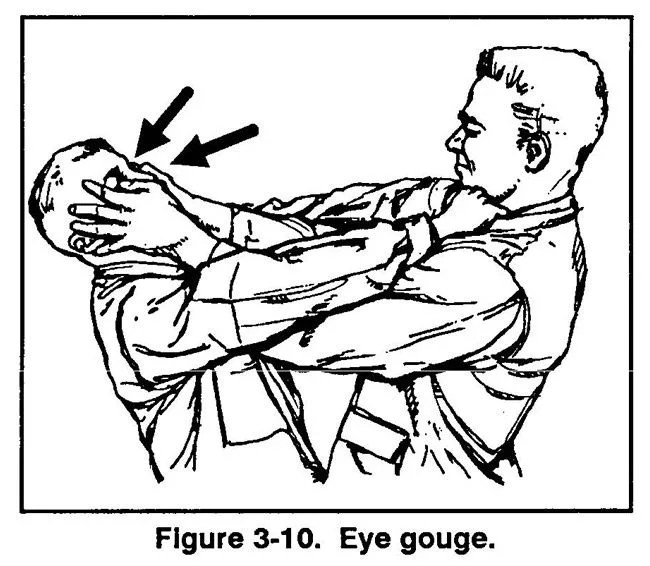There’s an assumption, fed by movies and a romanticized view of war, that every American military member is an e-lite hand-to-hand ninja, martial artist, and/or dynamo in the Octagon. While there are many men and women in the military with particular skill in close combat, that is a fact of prior interest, and rarely a result of training received in the military. It will strike many as odd, but the vast majority of soldiers, sailors, airmen, and Marines possess no exceptional skill at close combat, despite Hollywood’s glamorized portrayals to the contrary.
The U.S. Army and Marine Corps have each struggled over the years to develop close range combative skills, both armed and unarmed, within their ranks. We’ll focus on the ground combat oriented services, specifically the Marine Corps, in our case study: the technically focused Navy and Air Force have little need for close combat skills, other than a few niche units like the SEALs (SEAL Team Six recently put out a request for bids to train their sailors in combatives). However, ground combat often requires close encounters of a violent kind — the result of both the changing society mores and the realities of combat.
Thinking is often along these lines: “If we’re getting that close with the enemy, we’ve fucked up”.
Other militaries have developed a reputation for their close combat skill: the Republic of Korean Marine Corps with Hae Byung Do, Thai Royal Armed Forces with Muy Thai, the Israeli Defense Force with krav maga, the Russians with sambo. Some of these systems are grounded in national pastimes, and enjoy a solid foundation of skills learned from childhood on. In the U.S., our organized sports are baseball, football, and basketball. Ask a body of male Marine recruits how many have been in a physical fight today, and fewer than a third raise their hands. Violence may surround us in movies, the news, and video games, but few young Americans have tasted the salt of a fat, bloody lip or squinted through a blackened eye.
Martial Arts vs. Combatives
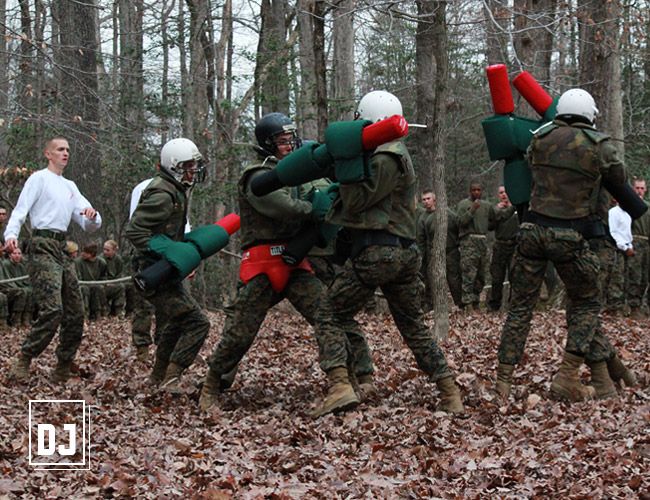
So, teaching hand-to-hand combat should be fairly easy, right? Pick a style, hire an instructor, and commence training — except most martial arts have morphed from combat techniques into the strikes, holds, and throws acceptable for sport. Most individuals develop their skills from the sport side — few people grow up in a culture of combat, like the Spartans, Samurai, Zulu or Apache. Sport martial arts certainly hone an individual’s skill, fitness, agility, and comfort with close interpersonal distance; however, karate kumite is no life or death event. Techniques developed and practiced for scoring points against a single opponent often differ from techniques effective in quickly killing or incapacitating an adversary pent on the same. Combat is also rarely one-on-one — the battlefield presents a dynamic where a soldier may fight two or more opponents simultaneously, and a succession of opponents with little to no rest. Further, body armor limits the available vulnerable strike zones, and weapons, issued or those of opportunity (i.e., a rock, stick, ammo can) can quickly change the calculus of a fight.
